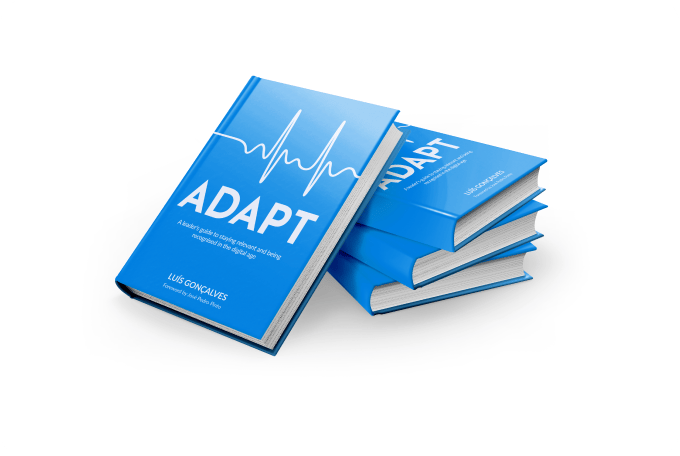Share this
What’s Epic, User Story and Task in Scrum Work Hierarchy
by Luis Gonçalves on Jan 13, 2024 6:11:15 AM

Every successful project to product transformation relies heavily on the ability to break down complex objectives into manageable, executable parts, understanding the intricacies of Scrum Work Hierarchy, which includes concepts such as Epic, User Story, and Task, is therefore vital for navigating this transformative process.
This blog post delves into these three core aspects, illustrating how they each play a crucial role in Scrum project management and, consequently, how they contribute to the success of a project to product transformation.
In Scrum, each of these components serves as a hierarchical layer, contributing to an efficient, structured approach to project planning and execution.
By understanding the role of Epics, User Stories, and Tasks, teams can better align their objectives with product development milestones, fostering synergy between project vision and product outcome. This not only increases productivity but also enhances value delivery, leading to improved customer satisfaction and business growth.
Today's post will unpack these key terms, their interrelationships, and their implications for the transformation from project to product.
ADAPT Methodology® is a unique Digital Product Development framework to change traditional project-centric companies toward product-led companies!
Society changed and leaders need support in the way they lead and design their digital product organizations, that is the reason why the ADAPT Methodology® was created, but now let’s get a deep dive into Communities Of Practice if you want to get a deeper knowledge about this topic.
Epic, User Story, and Task
Our goal is to help you demystify the Scrum Work Hierarchy and utilize its strengths for the benefit of your business or team. Let's get started on this enlightening journey.
The moment you start using Scrum, you will encounter a lot of technical terms that you have to be familiar with. But that’s fine. Three terms that you will be using in all your Scrum activities are epic, user story, and task. It is important to fully understand what they are so your team can overcome big or small challenges in delivering a product that meets the expectations of your customers.
Scrum is a framework for product management commonly used in software development, although it has been used in other fields including research, sales, marketing, and advanced technologies.
The Scrum Methodology is a mandatory framework for any leader who is serious about building a Digital Product Company.
As you continue incorporating Scrum into your agile team, you will realize that this framework is the best way to complete a project and develop a product that your customers want.
Epic
An epic is a large story that cannot be simply achieved in a single sprint. Usually, it takes months to accomplish an epic. It typically refers to a set of requirements that have not been rationalized into user stories yet. Think of it as a big goal that is yet to be simplified and divided into several tasks for your agile team to work on.
Epics are usually broad in scope, lacking in details, and are meant to be split into multiple, smaller stories before they can be worked on. Epic is usually regarded as the ‘top tier’ or a work hierarchy. Breaking it down into daily tasks, called ‘user stories’, helps an organization achieve its overall business goals.
Important guidelines when creating an epic:
- Create epics that managers and executives would want to track.
- An epic could be a product feature, customer request, or business requirement.
- Let your organizational culture dictate the size of your epic.
- Epics should not take too short or too long to complete.
- Burndown charts can be used to measure epics and give an actual and estimated amount of work to be done.
Examples of Epics:
- As a bank, we want to extend our services by offering life and health insurance.
- We want to add biometric recognition to increase security without hassle.
- As the marketing department, we want to create an interactive app to cater to more customers.
User Story
The User Story is simply the list of items that need to be done within a project. Think of it as a to-do list. This is owned by the Scrum Product Owner. The Scrum master, stakeholders, and the scrum team contribute to the completion of the backlog items.
The idea is to break down a product into shippable pieces so that the large project can be done successfully. Epics can involve multiple teams and multiple projects and can be tracked on multiple boards.
A user story is a very high-level definition of the project requirements. It contains just enough information to give the Scrum team proper context as to what the final product should be like, and for them to calculate an estimation for the completion. It is an agile approach that helps shift the focus from writing to talking about them.
Important guidelines when writing a user story:
- User stories are short, simple descriptions written throughout the Agile project.
- Although it is owned by the PO, anyone can write the user story.
- It is expressed in plain language so the customer can understand what the final product is all about (in the case of software, what it should accomplish).
- It answers the 'who', 'what', and 'why' of a project in simple language.
- User stories are regarded as the “heart of Scrum” because they serve as the ‘building blocks’ of the sprint.
Template for writing a user story:
As a < type of user >, I want < some goal > so that < some reason >.
Examples of User Stories
- As a user, I want to migrate all my data backups to a cloud system to free up my device.
- As a student, I can order official transcripts online to save time.
- As a consumer, I want to shop for grocery items from a mobile app so that I can skip the lines in the store.
Task
Below each epic is a more detailed set of user stories. And for those stories to turn into workable components, the Scrum team has to identify and sort tasks.
Scrum tasks are detailed pieces of work that are necessary to complete a story.
Tasks can range from a few hours to several hours (usually up to 12) and are assigned to team members who have the skills or expertise to do them.
Take note that a story is not considered complete until all tasks under it are done.
Tasks are placed on a Scrum Board for easy tracking. Generally, the Scrum Board is composed of the following categories:
- Stories
- Not started – the tasks that are yet to be worked on.
- In progress – tasks that the Scrum team is doing.
- Done – tasks that are completed.

The Scrum Board serves as a very useful visual tool that lets your agile team easily keep track of the sprint. The board should be updated daily. This not only helps your team sustain momentum but also gives you a clear idea of where you’re at in a particular sprint (whether you are lagging behind or just on time) and makes adjustments as necessary.
It is usually the Scrum master who creates the task board but it is the responsibility of everyone, particularly the agile team members to update it.
Summary
For a successful Scrum Sprint, learning how to write epics, stories, and tasks is essential. These three are the foundations of a sprint, giving your agile team a crystal-clear picture of what needs to be done, who needs to do it, and why it should be done.
One unique characteristic of the scrum methodology is that it is very time-sensitive. It is designed to accomplish goals in less time, with less error. To do this, it all starts with creating a high-level goal for the project or product development, known as the epic.
To achieve the epic, there has to be a more detailed use story, followed by a set of tasks that are specific and time-bound. Of course, some tools can be used to simplify these processes and make agile teamwork efficient and productive.
Did you like this article?
We enable leaders to become highly valued and recognized to make an impact on the World by helping them to design Digital Product Companies that will thrive and nourish in the Digital Age, we do this by applying our own ADAPT Methodology®.
Share this
- Agile Methodologies (18)
- Product Strategy (18)
- OKRs (16)
- Scrum (16)
- Product Mindset (14)
- Project To Product (10)
- Agile Retrospectives (9)
- CoPs (9)
- Knowledge Sharing (9)
- Time To Market (8)
- Product Discovery (7)
- Continuous Improvement (5)
- Strategy (5)
- Scrum Master (4)
- Content Marketing Strategy (3)
- Product Owner (3)
- Technical Excellency (3)
- Digital Transformation (2)
- Innovation (2)
- Scaling (2)
- Team Building (2)
- Business Model (1)
- Cost Of Delay (1)
- Customer Feedback (1)
- Customer Journey (1)
- Customer Personas (1)
- Design Thinking (1)
- Digital Leadership (1)
- Digital Product Tools (1)
- Go To Market Strategy (1)
- Google Design Sprint (1)
- Lean Budgeting (1)
- Lean Change Management (1)
- Market Solution Fit (1)
- Organisational Impediments (1)
- Outsourcing (1)
- Product (1)
- Product Metrics (1)
- Product Roadmaps (1)

Organisational Mastery
Get your free copy

ADAPT
Get your free copy

Product First
Get your free copy
